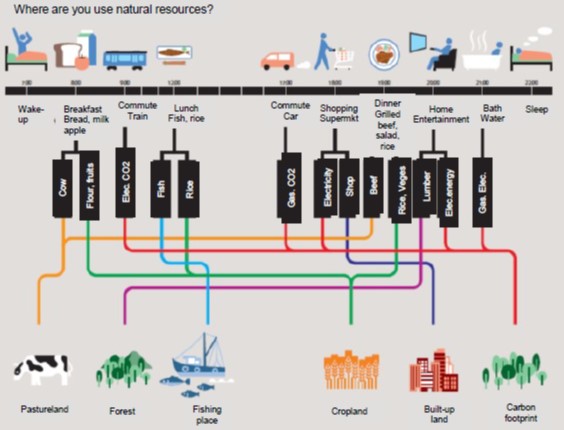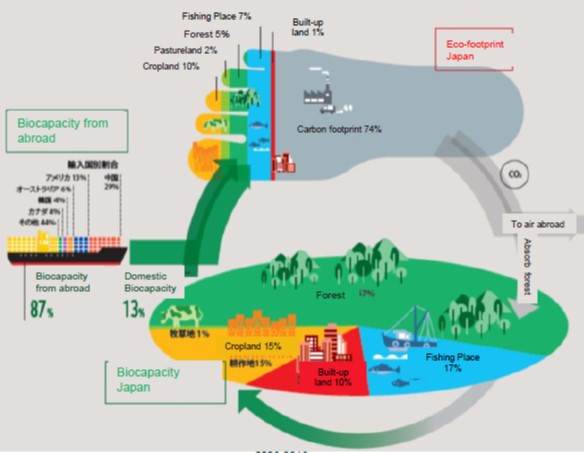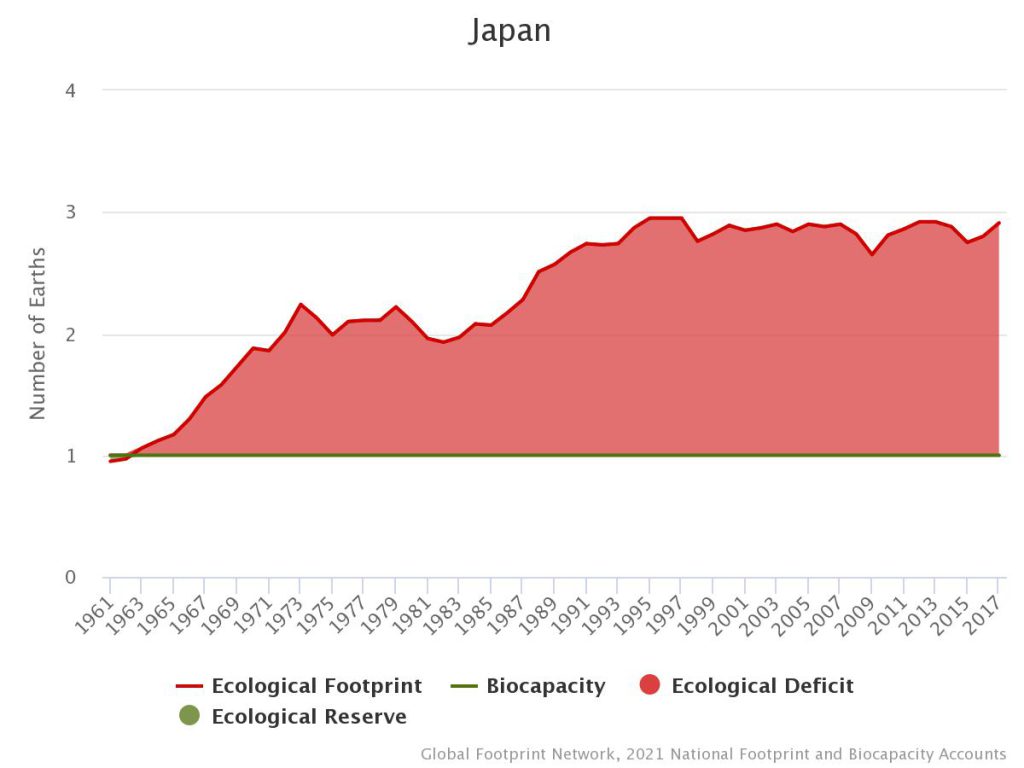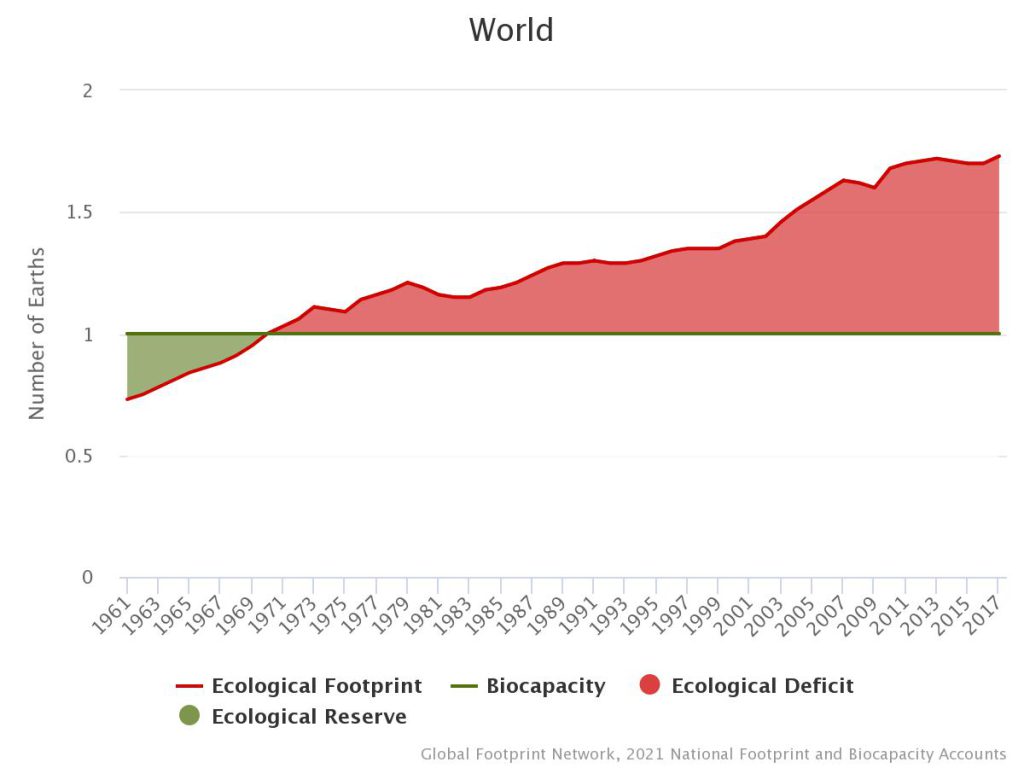We have already received the signs from our planet such as;
Sea level has risen 20-30 cm since 1900.
Bushfires in Australia and California, the U.S.
Extreme weather: Droughts, floods, hurricanes, and tornados
Ecological footprint
Ecological Footprint accounting measures the demand on and supply of nature.
- The demand: Ecological Footprint
- Plant-based food and fiber products, livestock and fish products, timber and other forest products, space for urban infrastructure and to absorb its waste, especially carbon emissions
- The supply: Biocapacity
- The productivity of its ecological assets (including cropland, grazing land, forest land, fishing grounds, and built-up land)
The ecological footprint of one day
The illustration below explains the relationship between one-day activity and ecological footprint. All activities were divided into six categories.

The ecological footprint of Japan

The above picture indicates the relationship between the ecological footprint and bio-capacity of Japan. One of the features of Japan is that it relies on 87% of imported products. Japan has only 13% of the biocapacity of its total ecological footprint. Therefore our life stressed on various lands overseas and most of emitted CO2 is stored in the global air.

The above graph indicates that If all countries on the earth do the same way of life and activities as Japan, the area of 2.8 earth is needed.
How is your country’s stuation?
You can check your country’s status at the following site;
Global footprint network (Country trend)
Ecological footprint vs ecological reserve

Let’s look at the situation of the world. All human activities on our planet have exceeded the earth’s capacity since 1969. As you can see from the above graph, we use as much ecological resources as if we lived on 1.7 Earths.
We are beyond the earth’s limits and overshooting.
We should understand this fact and realize the signals we received from our planet. The information teaches us to do something by ourselves for our future generation.
So, what we can do to change this situation?
WWF suggests the following actions;
Reduce the effects on the environment
- Take countermeasures against global warming
- Reduce food loss
- Technological innovations
Improve the biocapacity of lands
- Regenerate the soil
- Aforestation
- Ecological land-use
Collaboration and education
- Collaboration among stakeholders (Governments, private sector, and civil community)
- Ecological education
What you can do regarding the above list?

According to Global Footprint Network (GFN), Algeria’s ecological evolution is negative. The causes are not only in the consumption model but also in desertification, regional imbalances in development, overexploitation of non-renewable mineral resources and agricultural practices.
According to the World Wide Fund (WWF) for the protection of nature, It would now take 1,5 planets to sustainably meet the needs of earth’s inhabitants for a year.
Charef Nesrine from Algeria.
Hi Nesrine,
With the latest data, it is increasing to 1.73 earth.
We should stop this trend.
https://data.footprintnetwork.org/#/countryTrends?cn=5001&type=earth